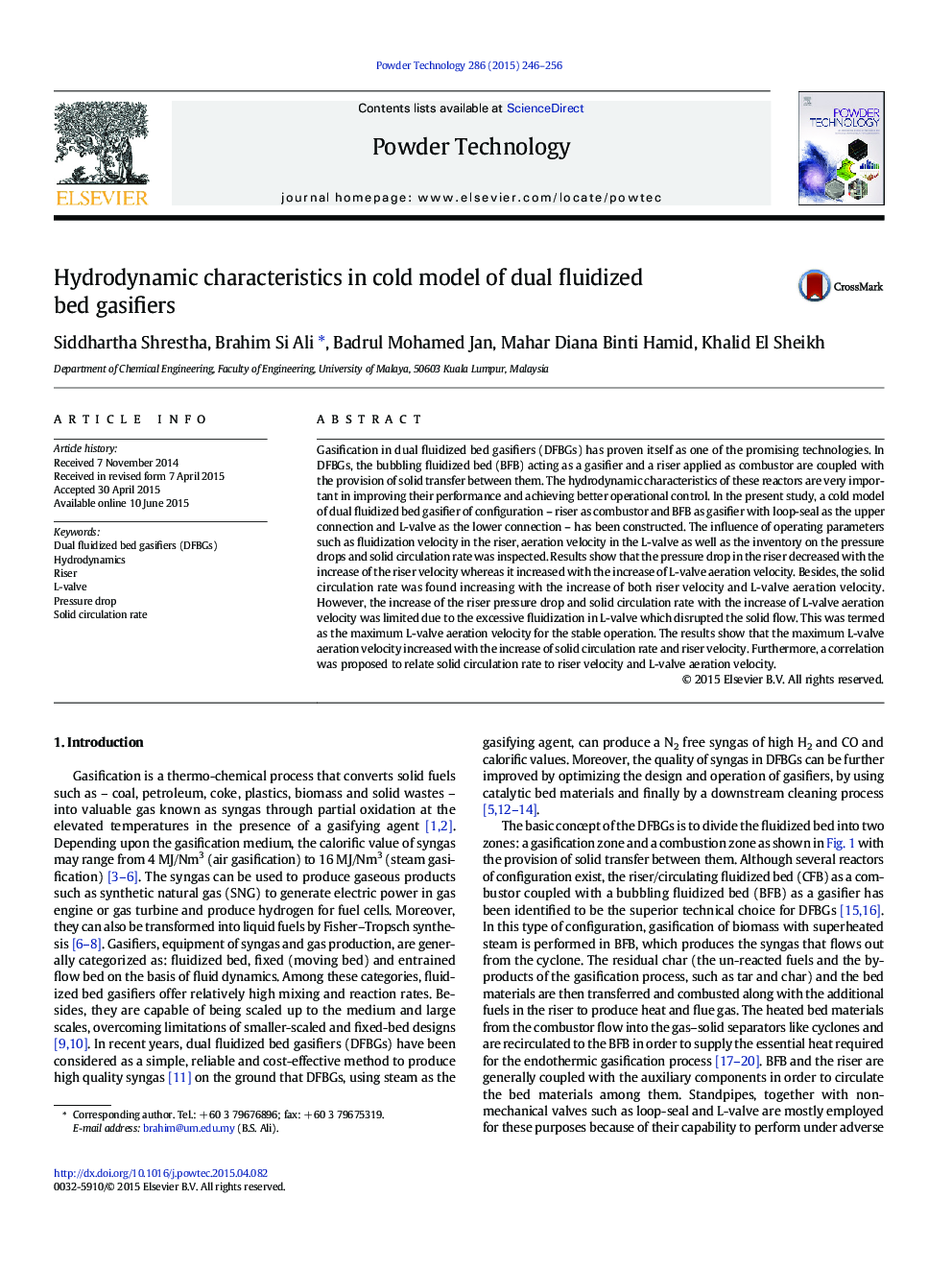| کد مقاله | کد نشریه | سال انتشار | مقاله انگلیسی | نسخه تمام متن |
|---|---|---|---|---|
| 235227 | 465631 | 2015 | 11 صفحه PDF | دانلود رایگان |
• Hydrodynamic characteristic in cold model of DFBGs with L-valve was studied.
• Pressure drop in riser increased with increasing L-valve aeration velocity.
• Increase in riser pressure drop was limited with L-valve aeration velocity.
• Solid circulation rate increased with increasing L-valve aeration velocity.
• L-valve aeration velocity increased with the increase in solid circulation rate.
Gasification in dual fluidized bed gasifiers (DFBGs) has proven itself as one of the promising technologies. In DFBGs, the bubbling fluidized bed (BFB) acting as a gasifier and a riser applied as combustor are coupled with the provision of solid transfer between them. The hydrodynamic characteristics of these reactors are very important in improving their performance and achieving better operational control. In the present study, a cold model of dual fluidized bed gasifier of configuration – riser as combustor and BFB as gasifier with loop-seal as the upper connection and L-valve as the lower connection – has been constructed. The influence of operating parameters such as fluidization velocity in the riser, aeration velocity in the L-valve as well as the inventory on the pressure drops and solid circulation rate was inspected. Results show that the pressure drop in the riser decreased with the increase of the riser velocity whereas it increased with the increase of L-valve aeration velocity. Besides, the solid circulation rate was found increasing with the increase of both riser velocity and L-valve aeration velocity. However, the increase of the riser pressure drop and solid circulation rate with the increase of L-valve aeration velocity was limited due to the excessive fluidization in L-valve which disrupted the solid flow. This was termed as the maximum L-valve aeration velocity for the stable operation. The results show that the maximum L-valve aeration velocity increased with the increase of solid circulation rate and riser velocity. Furthermore, a correlation was proposed to relate solid circulation rate to riser velocity and L-valve aeration velocity.
The L-valve aeration velocity controls the solids that are being transported to the riser from the BFB. The solid circulation rate increases with the increasing L-valve velocity but only up-to certain maximum L-valve velocity after which it starts decreasing. This L-valve velocity is the maximum L-valve velocity applicable.Figure optionsDownload as PowerPoint slide
Journal: Powder Technology - Volume 286, December 2015, Pages 246–256
